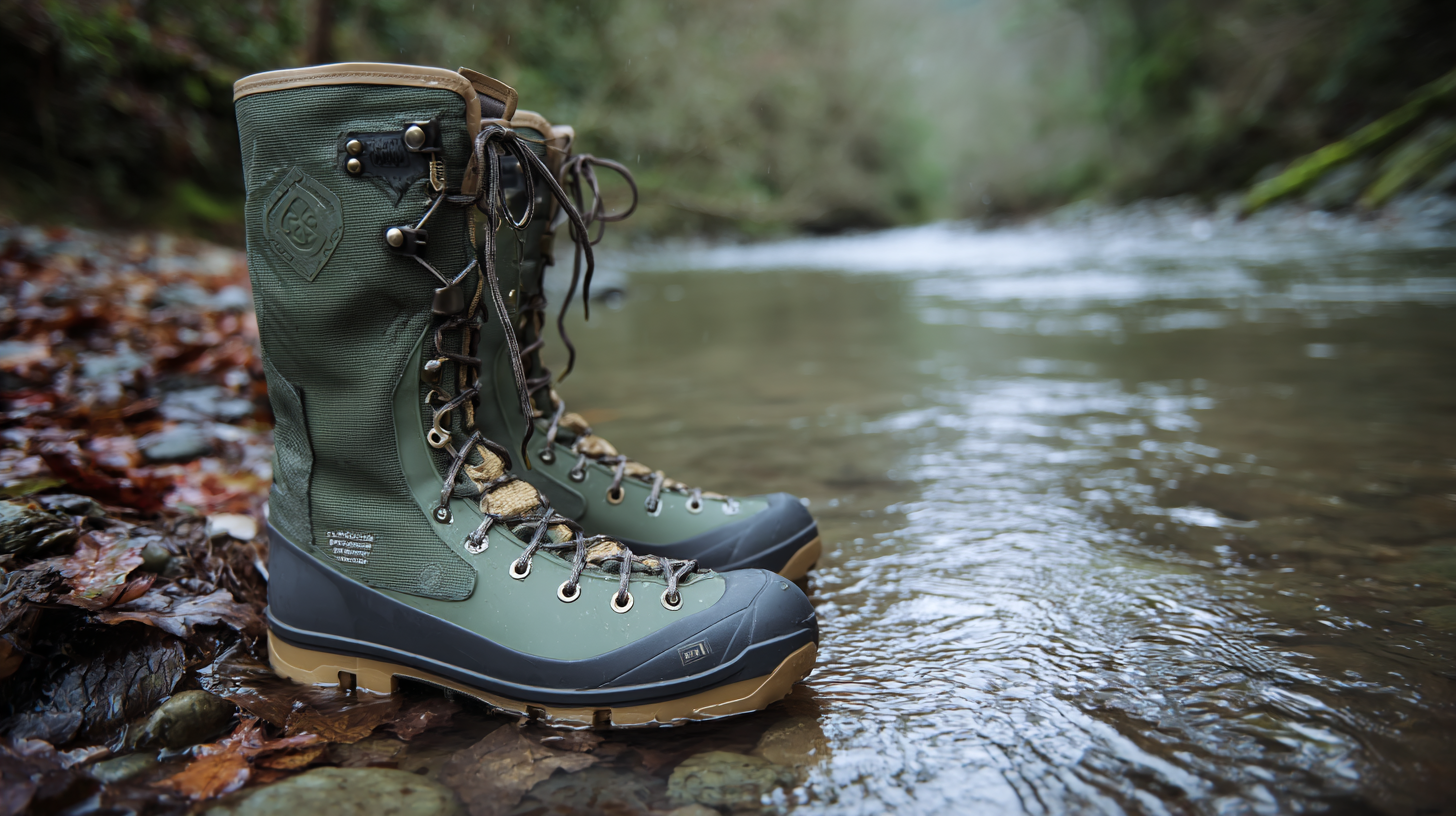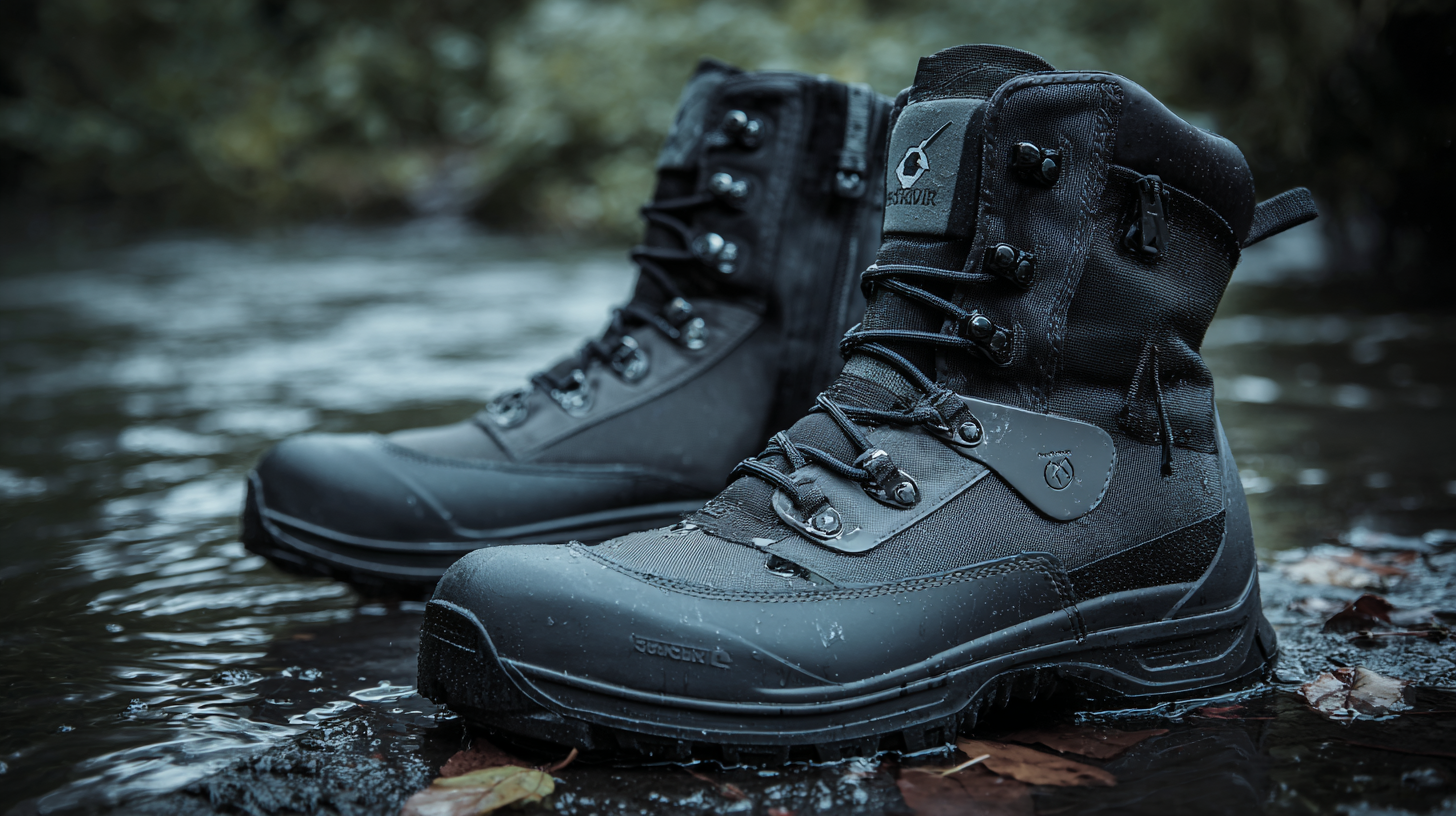The evolution of Neoprene Fishing Boots has seen significant advancements over the years, and as we look toward 2025, the future trends in this niche market are both exciting and innovative. With a growing emphasis on sustainability, technology integration, and enhanced user experience, the next generation of Neoprene Fishing Boots promises to revolutionize how anglers approach their time on the water.

This blog will explore emerging technologies that could reshape design and functionality, as well as provide practical tips on selecting the right pair for various fishing environments. Whether you're a seasoned pro or a weekend enthusiast, understanding these trends will ensure you stay ahead in the ever-evolving world of fishing gear.
Join us as we dive into the future of Neoprene Fishing Boots and discover how to make the most informed choices for your next fishing adventure.
As we look ahead to 2025, the evolution of neoprene fishing boots is set to be profoundly influenced by emerging technologies. Recent industry reports indicate that the global fishing gear market is projected to reach $50 billion by 2025, with neoprene footwear comprising a significant portion of this growth. Innovations in material science have enabled manufacturers to develop lighter, more durable neoprene blends that not only enhance comfort but also provide superior insulation and waterproofing. This advancement is expected to appeal to a wider demographic of anglers, including the increasing number of women participating in fishing, which has grown by over 20% in recent years according to the American Sportfishing Association.
In addition to material improvements, the incorporation of smart technology into fishing boots is transforming user experiences. Features such as temperature regulation systems and biometrics are being integrated to enhance performance. A recent survey indicates that 45% of anglers are interested in boots equipped with tech features that monitor health metrics or environmental conditions while they fish. Companies that embrace these innovations will likely dominate the market, responding to the evolving needs and preferences of consumers who seek not only functionality but also cutting-edge technology in their fishing gear.
| Feature | Description | Benefit | Expected Adoption Rate (%) |
|---|---|---|---|
| Smart Insulation Technology | Adaptive insulation that responds to temperature changes. | Improved comfort in varying temperatures. | 65% |
| Eco-Friendly Materials | Neoprene made from natural rubber and recycled materials. | Reduction in environmental impact. | 70% |
| Enhanced Traction Soles | Soles designed with improved grip patterns for wet surfaces. | Increased safety while fishing. | 80% |
| Integrated Water-Repellent Coatings | Coatings that repel water and prevent absorption. | Keeps boots lighter and more comfortable. | 75% |
| 3D Printed Components | Custom-fit components created using 3D printing technology. | Enhanced fit and support. | 60% |
As we look ahead to 2025, the future of neoprene fishing boots is set to be influenced significantly by advancements in insulation technology. Modern fishing boots must not only provide waterproof protection but also ensure that they keep feet warm and comfortable in varying weather conditions. The comparative analysis of insulation features in next-generation neoprene boots reveals an exciting trend towards the use of lightweight, breathable materials, which enhance mobility without compromising thermal efficiency.

Innovative designs are incorporating synthetic insulation layers that can adapt to temperature fluctuations, allowing anglers to stay out longer in diverse climates. With offerings that boast superior moisture-wicking properties, these boots promise to manage sweat effectively while also providing a reliable barrier against cold water. Furthermore, the enhancements in sole technology improve traction on slippery surfaces, making them ideal for both fishing and other outdoor adventures. As neoprene fishing boots continue to evolve, anglers can expect a perfect blend of comfort, performance, and protection that meets the demands of the modern fishing landscape.
As we look towards 2025, sustainability is becoming a driving force in the manufacturing of neoprene fishing boots. Traditional neoprene, while effective for insulation and flexibility, poses significant environmental challenges due to its petroleum-based origins and non-biodegradable properties. In response, companies are innovating by exploring alternative materials that not only maintain the functional integrity of fishing boots but also reduce environmental impact. For instance, bio-based neoprene derived from renewable sources like limestone or natural rubber is gaining traction, offering a greener option without compromising performance.
In addition to materials, manufacturers are also reevaluating their production processes to enhance sustainability. Techniques such as waterless dyeing and energy-efficient fabric cutting are being adopted to minimize waste and energy consumption. By implementing circular economy practices, brands are finding ways to recycle and repurpose old boots, leading to less landfill waste. As these advancements unfold, the fishing community will benefit from durable, high-performance gear that is aligned with a growing commitment to environmental stewardship, ultimately redefining the future of fishing boots for eco-conscious consumers.
As we look ahead to 2025, the fishing industry is poised to witness significant advancements in neoprene fishing boots, particularly in the balance between performance and comfort. Industry reports indicate that the global neoprene market is projected to grow by 5.2% annually, driven by increasing consumer demand for high-quality outdoor gear. This rise underscores the importance of manufacturers improving product designs that cater to both avid anglers and casual fishers alike.

In 2025, we expect to see innovative materials such as lightweight neoprene blends that maintain insulation while providing enhanced flexibility. According to a recent survey by Fishing Gear Analytics, 68% of anglers prioritize comfort over performance features when selecting fishing boots. However, balancing these aspects is critical; advancements in boot construction may allow for improved traction and waterproofing without compromising the comfort levels that users seek. This trade-off will be vital in reflecting the evolving needs of the fishing community, ensuring that anglers receive optimal support during long hours on the water while also enjoying the performance needed to tackle various conditions.
As we look towards 2025, the neoprene fishing boot market is poised for significant advancements, especially in terms of pricing. Budget-friendly options are becoming increasingly accessible, appealing to casual anglers who may be venturing into fishing for the first time or those who fish only occasionally. These boots are designed to offer decent thermal insulation and waterproof features while incorporating lightweight materials that don’t compromise comfort. Innovations in manufacturing techniques are allowing for reduced production costs, which ultimately benefits the consumer by keeping prices low without sacrificing quality.
On the premium side, however, neoprene fishing boots are evolving into high-performance equipment tailored for serious anglers. These boots will likely incorporate advanced materials, such as reinforced seams and enhanced traction outsoles, offering durability and stability in various fishing conditions. Additionally, features like quick-drying technology and ergonomic designs will cater to those who demand performance and comfort in their gear. While these premium models may come with a higher price tag, the value they offer in terms of longevity and functionality can make them worth the investment for avid fishing enthusiasts. The contrast between budget and premium neoprene fishing boots showcases the diverse needs of anglers and the direction the market is heading in the coming years.
